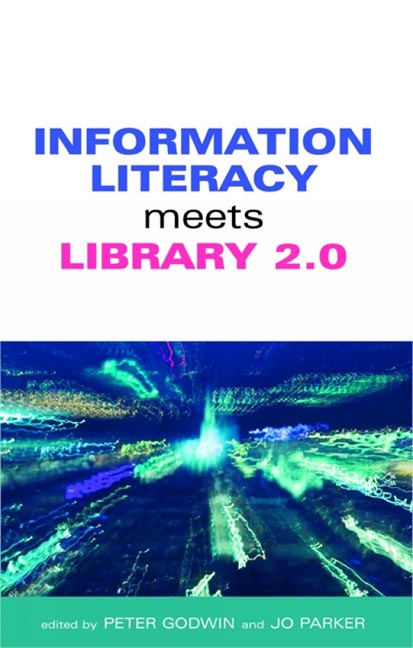1 - Introduction: making the connections
from Part 1 - The basics 1
Published online by Cambridge University Press: 08 June 2018
Summary
It's time to stop boring our users with conducted tours of our libraries, earnest library guides, and endless demonstrations of those arcane databases that we love so much. Something has happened. Our users have new mindsets and new expectations. Our information role has spread from buildings and collections to encompass the whole electronic world. Users are creating phenomenal amounts of content individually and collaboratively on the web. We have to recognize the importance of this new landscape in the content we teach. More fundamentally, we now have a new range of tools available to help us transform our teaching into something which is both more fun and more engaging for our users. This is the challenge of Web 2.0 to information literacy (IL). In this introductory chapter we shall investigate why we wrote a book on such a volatile subject, and consider:
• how this affects what we consider to be information literacy
• why we think there is such a phenomenon that can be called Web 2.0
• how this impacts on all sectors of the library world
• case studies which showcase the tools in use and look toward the future.
Why a book?
A book concerning such a movable target as the technologies known as Web 2.0 must be risky. As we enthuse about the exciting new open source tools in perpetual beta available for sharing content on the web, surely it is ironic to do so in a fixed print format? Yet this year there have been a number of excellent guides to Web 2.0 appearing (e.g. Bradley, P. (2007), How to use Web 2.0 in your Library, Facet) all in print form. The sheer convenience of print for browsing, review and reference is therefore still demonstrable. We believe that there will be a place for an edited collection of papers to provide you with the background, the definitions, and case studies of those who have blazed the trail in the use of Web 2.0 in relation to information literacy. Our insurance will be a blog to give us the opportunity to add, comment and keep you up to date (Information Literacy Meets Library 2.0, at http://infolitlib20.blogspot.com).
- Type
- Chapter
- Information
- Information Literacy Meets Library 2.0 , pp. 3 - 18Publisher: FacetPrint publication year: 2008
- 1
- Cited by



